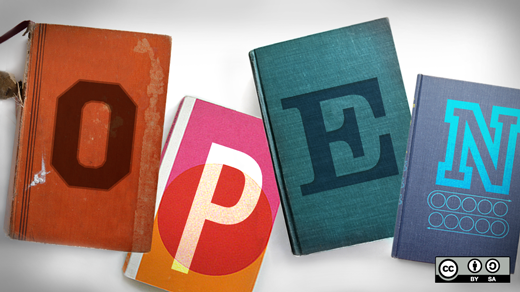I’ve been working in educational technology for more than 17 years and have spent much of my career advocating for open source in schools. For years, open source in education has gotten a bad rap. Superintendents, school boards and teachers frequently misunderstood open source software to be synonymous with dubious code birthed by mad, degenerate "hackers" who spend dark nights scheming to unleash complex and nefarious plots for social disruption.
Since public education communities have historically been biased toward the traditional, you might guess that, at the very least, open source was long considered a little outlandish. On multiple occasions, I’ve fielded questions such as: Who comes up with this open source stuff? Isn’t it illegal? Why do they just give it away for free?
Part of my journey to challenge this mindset began at the turn of the millennium. As the Y2K bug scare subsided and schools awoke to the promise and power of student technology, I struggled with one of the oldest and most taxing questions a public school administrator faces: How are we going to afford our school technology? Budgets for software and computers were slim, technology staff resources were thin and district leadership felt increasing urgency to provide robust software for our diverse community of students, teachers and support staff.
Fueled by a desire to avoid vendor lock-in
One of my first post-Y2K software projects was an overhaul of our teachers’ old-school paper grading system. The goal was to deploy a flexible, fully web-based classroom gradebook and parent grade report portal for the lowest cost possible.
After evaluating proprietary solutions from a number of big vendors, I was left with a nagging concern: No matter which company was selected, our district would not have direct access to the underlying program code or the ability to customize the program to our teachers’ needs. In essence, we would be spending precious district dollars on a system that would leave us locked out of the development process and forbidden from actively participating in feature design or development. Teachers could make gradebook feature requests, but the vendors neither guaranteed these features would make it into the program nor committed to reasonable development timelines.
There had to be a better way.
No nefarious plots, just an open source philosophy
I took a risk. Dismissing the big proprietary vendors, I chose to work with a talented, young software developer named James. Far from a nefarious "hacker" with a shady back-story, James was a superbly talented and professional programmer. He wrote quality code and deftly translated teacher feature requests into efficient grading tools and time-saving reports. In a few short months, James worked with us to design, develop and deploy a locally hosted web gradebook customized by teacher input, principal requirements and parent requests. The result was extraordinary — we received the gradebook teachers needed, had access to the code, and saved a bundle of money.
Our developer also wielded a secret weapon: The LAMP application stack. Fueled by a flexible open source engine, the final product demonstrated how open source software could power a complex school software project to a successful implementation while cutting costs significantly. No nefarious plots were stirring — just an open source philosophy to aid our schools in efficiency, fiscal responsibility and control of student data.
More than just fiscal savings — a collaborative spirit
It has been more than 12 years since our school district’s first web gradebook project. Today, open source solutions are trusted in all corners of our schools. Every student, staff member and teacher in our district is routinely empowered by remarkable software such as Koha, LAMP, LibreOffice, Moodle, Scratch, SipXecs and WordPress. In addition, my team is currently spearheading a large-scale high school student 1:1 laptop-learning program running open source software exclusively. I continue to be amazed by what can be accomplished via open source software in education.
Fortunately, our district is becoming somewhat less unique in our vision. While there is still work to be done to challenge traditional software preconceptions, I have observed that most of the education community’s open source biases are fading as teachers and school leaders progressively consider alternatives to costly proprietary products.
Of course, while the fiscal savings provided by the free side of the open software movement cannot be ignored by educators, open source in education represents more than zero cost; the principles of open source promote technological freedom of choice and encourage a participatory, collaborative spirit. These values are vital to education and student learning. I am so proud that we can model these values for our students and lead by example.
For more information on Penn Manor School District technology initiatives visit: https://www.pennmanor.net/techblog/







3 Comments